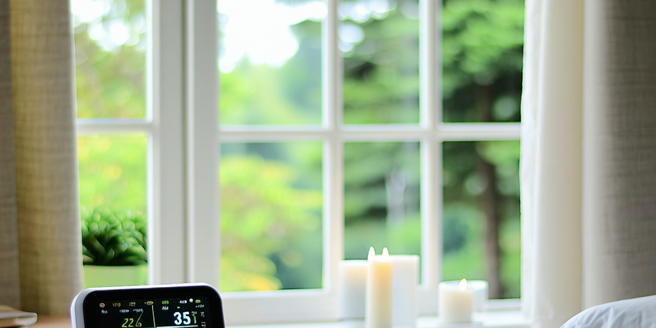
Understanding the Importance of Indoor Humidity Levels
Indoor humidity plays a crucial role in maintaining a comfortable and healthy living environment. By understanding its impact, homeowners can manage conditions that promote a healthier lifestyle. Low humidity can lead to dry skin, irritation, and increased susceptibility to infections, while high humidity levels can encourage mold growth and dust mites, contributing to allergies and asthma. Balancing humidity is essential for preserving not only health but also the structural integrity of the home. Furniture and wooden structures can warp or crack due to fluctuating moisture levels. Thus, monitoring and maintaining appropriate indoor humidity directly influence both the comfort and well-being of residents.
How to Measure and Monitor Your Home’s Humidity
Accurate humidity control begins with proper measurement. Hygrometers offer a reliable way to gauge indoor moisture levels swiftly and accurately. Placing these devices in various rooms provides insight into specific areas needing attention. Regular checks, ideally daily, ensure immediate awareness of drastic changes. To maintain accuracy, it’s essential to position the hygrometer away from direct drafts, heat sources, and sunlight. High-quality digital hygrometers can offer precise readings with minimal calibration needs. Coupling technology with smart home devices further simplifies tracking, by sending alerts when levels move beyond desired thresholds. Educating oneself on comfortable humidity limits, generally between 30-50%, guides necessary adjustments, supporting an optimal living environment through attentive monitoring.
Simple Tips for Increasing Indoor Humidity
Boost indoor humidity effortlessly with practical solutions like placing bowls of water near heat sources to accelerate evaporation. Houseplants are natural humidifiers; large species such as palms and ferns release moisture through a process called transpiration. Moreover, keep an eye on indoor humidity levels using a hygrometer to ensure they remain within the recommended range. Additionally, drying clothes indoors on a drying rack introduces moisture, as does leaving bathroom doors open post-shower. Altering daily habits, such as minimizing exhaust fan use during cooking and bathing, helps retain moisture. Investing in a humidifier offers a long-term solution to manage levels conveniently, ensuring consistent comfort and hydration in living spaces.
Effective Ways to Decrease Excess Humidity
Combat excess humidity effectively by leveraging a mix of ventilation and dehumidification. Ensure that exhaust fans are in proper working order in kitchens and bathrooms, facilitating moisture release during cooking and bathing. Additionally, inspect for any leaks that may contribute to indoor humidity and address them promptly. Regular airing of living spaces and using moisture-absorbing materials like silica gel or charcoal can significantly reduce indoor air moisture. Sealing leaks and installing vapor barriers in basements are preventive tactics. When natural measures fall short, dehumidifiers offer a robust option, efficiently extracting surplus humidity from the air, fostering healthier living conditions by controlling unwanted dampness.
The Role of Humidifiers and Dehumidifiers
Humidifiers and dehumidifiers are pivotal tools in controlling home humidity levels. Humidifiers introduce moisture into the air, counteracting dry conditions that may contribute to respiratory discomfort, dry skin, and static electricity. Regular maintenance of these devices is crucial to ensure they operate efficiently and prolong their lifespan. These devices come in various models, including ultrasonic and evaporative, each suited for different needs. On the other hand, dehumidifiers extract excess moisture, vital in preventing issues such as mold growth, allergies, and structural damage caused by dampness. Both devices are essential investments in achieving and maintaining a balanced humidity environment, ensuring the health and comfort of household members.
Maintaining Optimal Humidity for Health and Comfort
Achieving optimal humidity is key to enhancing health and comfort indoors. Ideal levels, typically between 30% to 50%, help avoid health-related problems like respiratory issues and skin dryness. Constant moderation reduces risks of mold and mildew, which thrive in overly humid environments. It’s important to monitor humidity levels throughout the year to make necessary adjustments. Use humidifiers during dry months and dehumidifiers during more humid periods to keep levels balanced. Regularly cleaning and servicing these appliances will sustain efficiency and effectiveness. Keeping a consistent check on humidity not only prolongs the life of home materials and furnishings but also guarantees a pleasant and healthy atmosphere.
